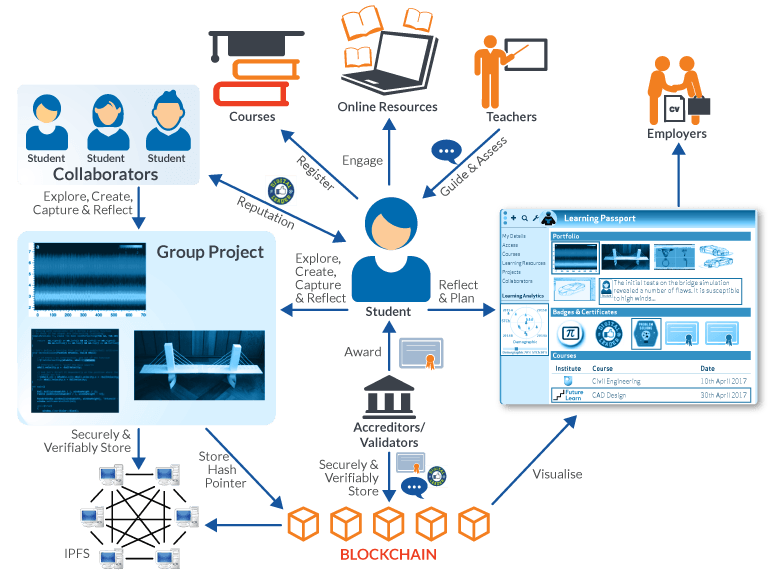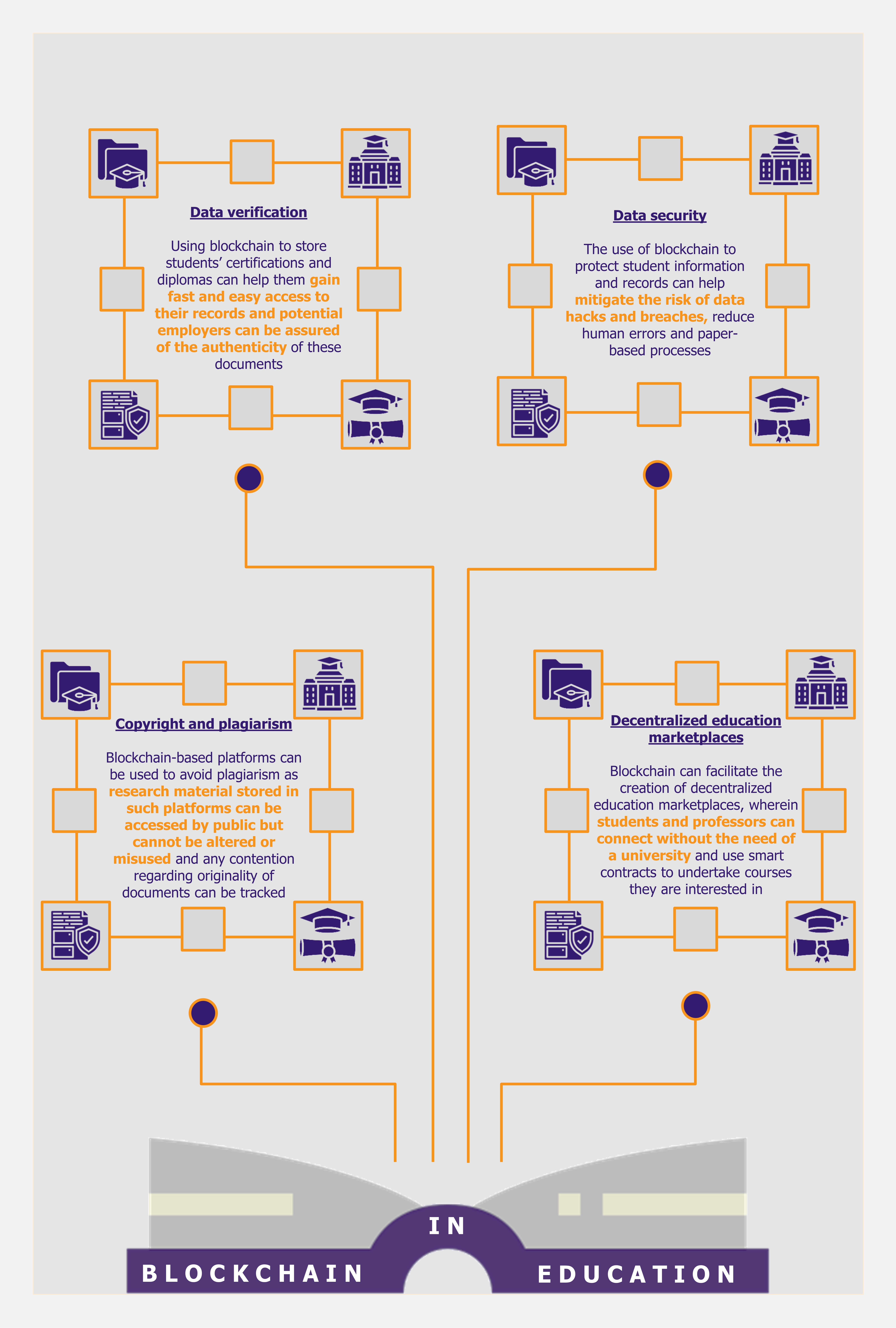SERVICES BY US
Education & Blockchain
Blockchain technology can be useful in Education:
- Secure and tamper-proof record-keeping: Blockchain technology can provide a secure and tamper-proof way to store academic records, including degrees, diplomas, and certificates. Currently, academic records are stored in various formats, including paper and digital formats. However, these formats are vulnerable to fraud, tampering, and loss. By using blockchain, educational institutions can create a permanent and tamper-proof record of student achievements. This can improve the integrity of academic records, making it easier for students to apply for jobs or further studies.

- Verification of credentials: One of the most significant benefits of blockchain in education is the ability to instantly verify educational credentials. With blockchain, students can have a digital record of their academic achievements, including their degrees and certificates. This record can be easily shared with potential employers, academic institutions, or other stakeholders. The record can be verified instantly, which can save time and resources.
- Tracking student progress: Blockchain can be used to track a student’s progress throughout their academic journey. This can provide educators with real-time insights into a student’s performance, including their grades, attendance, and participation in extracurricular activities. This data can help educators identify areas where a student needs additional support and can also help them tailor their teaching methods to meet the student’s specific needs.

- Micro-credentials and digital badges: Micro-credentials and digital badges are a way to recognize specific skills and achievements. Blockchain can facilitate the issuance of these credentials by creating a permanent record of a student’s accomplishments. This can provide students with a more comprehensive and accurate representation of their skills and knowledge, which can be valuable to employers and academic institutions.
- Decentralized learning platforms: Blockchain can be used to create decentralized learning platforms, where students can access educational resources and interact with teachers and other learners without the need for a central authority. These platforms can provide greater flexibility and accessibility to education, particularly for those who live in remote areas or have limited access to traditional educational resources.
Overall, blockchain has the potential to transform the way education is delivered and managed. By providing a secure, transparent, and decentralized system for managing educational records and certificates, blockchain can improve the quality of education for students, increase transparency and accountability, and promote innovation in the education sector.

Few blockchain case studies for Education:
Learning Machine: Learning Machine is a blockchain-based credentialing platform that allows organizations to issue, verify, and share digital credentials. The platform uses blockchain technology to create tamper-proof records of educational achievements, which can be shared with employers, academic institutions, and other stakeholders. Learning Machine has partnered with several universities and institutions, including MIT, the University of Bahrain, and the Government of Malta.
Holberton School: Holberton School is a coding school that uses blockchain technology to issue digital certificates to its graduates. The certificates are stored on the blockchain, which ensures their authenticity and makes them easily shareable and verifiable. Holberton School has also partnered with blockchain startup BitDegree to offer scholarships to students who complete blockchain-related courses.
Blockcerts: Blockcerts is an open-source blockchain platform for issuing and verifying digital certificates. The platform was developed by MIT and Learning Machine and is designed to be interoperable with other blockchain systems. Blockcerts has been adopted by several universities and institutions, including the University of Melbourne, the University of Bahrain, and the ConsenSys Academy.
Open Badges: Open Badges is an open-source platform for issuing and displaying digital badges. The platform uses blockchain technology to create a tamper-proof record of a student’s achievements, which can be easily shared and verified. Open Badges has been adopted by several educational institutions, including the University of Illinois, the University of California, and the City University of New York.
ODEM: ODEM is a blockchain-based education platform that aims to make education more affordable and accessible. The platform connects students with educators directly, eliminating intermediaries and reducing costs. ODEM also uses blockchain technology to create a secure and transparent record of a student’s academic achievements, which can be shared with potential employers and academic institutions.
These are just a few examples of how blockchain technology is being used in education. As the technology continues to evolve, we can expect to see more innovative use cases emerge in the education sector.
Services categories
About us

Our goal is to help our clients achieve their online goals by providing them with customized, effective, and results-driven solutions that drive growth, increase visibility, and strengthen their online presence.
Contact info
Address office
USA, INDIA, VIETNAM
Phone